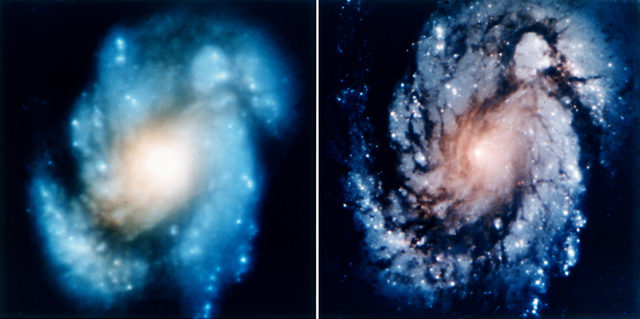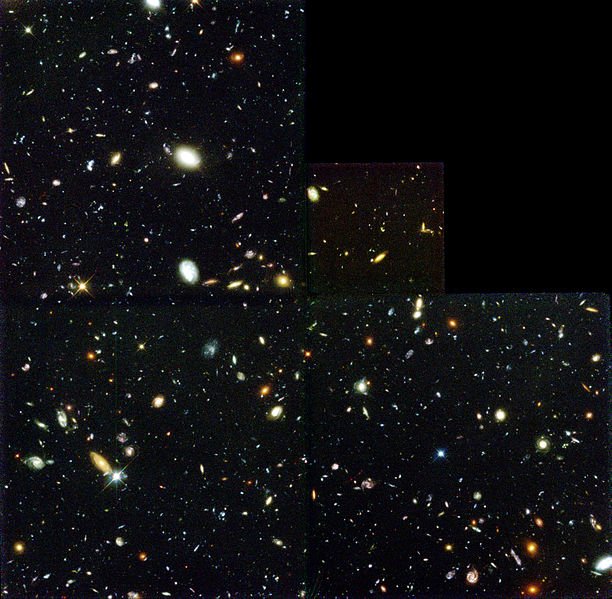The vastness of the universe can hardly be conceived in our minds and it is comprehensible since our brains evolved in a much smaller environment.
But the strange thing about our inner selves is that our curiosity seems to have no boundaries, our insatiable hunger for answers about the reality we live in pushed us to aim our sight to the edge of the universe.
The most famous window we built on our universe is, with no doubt, the Hubble telescope.
We are all used to see the marvellous pictures which came back from it, but few of us know that it was not an immediate success.
Before the first servicing mission of 1993, the Hubble telescope had a bit of problems due to a flaw of the main mirror. In fact, you can judge yourself with the comparison below.
Given the huge development costs and the 12 years of work, many criticised the results Hubble was bringing home and the reputation of the entire mission was at risk, but the space telescope was about to reveal its true power.
In 1995, after pointing the telescope on a strategic region of space 2.6 arc minutes across (as big as the head of a pin an arm distant from your eyes), Hubble took an iconic picture which, for the first time in history, made clear to the eyes of the public the scale of the universe: The Hubble Deep Field.
Almost all of the 3000 objects in the HDF picture are galaxies.
By revealing such a big number of galaxies in a so small portion of the sky aroused a great new sentiment about space observation and represent a huge milestone in the study of the early universe.
Every picture coming from Hubble is a slice of time of our universe and the deeper we look the more Hubble will allow us to grasp the true scale of the universe we live in.
Sources: HDF, Hubble Services Missions


Why is it that we are part of the Milkyway galaxy which has many millions of stars, however when you look up at the night sky you can only see a few hundred stars?
Downvoting a post can decrease pending rewards and make it less visible. Common reasons:
Submit
The short answer is: light pollution. We live in areas with lot of artificial light which is brighter (to us) than the light coming from some stars. In fact the majority of terrestrial telescopes are located in isolated location to avoid light pollution. You can see the difference by yourself by looking at the sky while visiting a big city and looking at the sky when camping in camp at night, you'll find a lot more bright dots when looking up.
Downvoting a post can decrease pending rewards and make it less visible. Common reasons:
Submit
This post has received a 1.51 % upvote from @drotto thanks to: @bendelgreco.
Downvoting a post can decrease pending rewards and make it less visible. Common reasons:
Submit
This post has received a 0.53 % upvote from @buildawhale thanks to: @bendelgreco. Send at least 1 SBD to @buildawhale with a post link in the memo field for a portion of the next vote.
To support our daily curation initiative, please vote on my owner, @themarkymark, as a Steem Witness
Downvoting a post can decrease pending rewards and make it less visible. Common reasons:
Submit
This post has received a 6.25% upvote from @lovejuice thanks to @bendelgreco. They love you, so does Aggroed. Please be sure to vote for Witnesses at https://steemit.com/~witnesses.
Downvoting a post can decrease pending rewards and make it less visible. Common reasons:
Submit